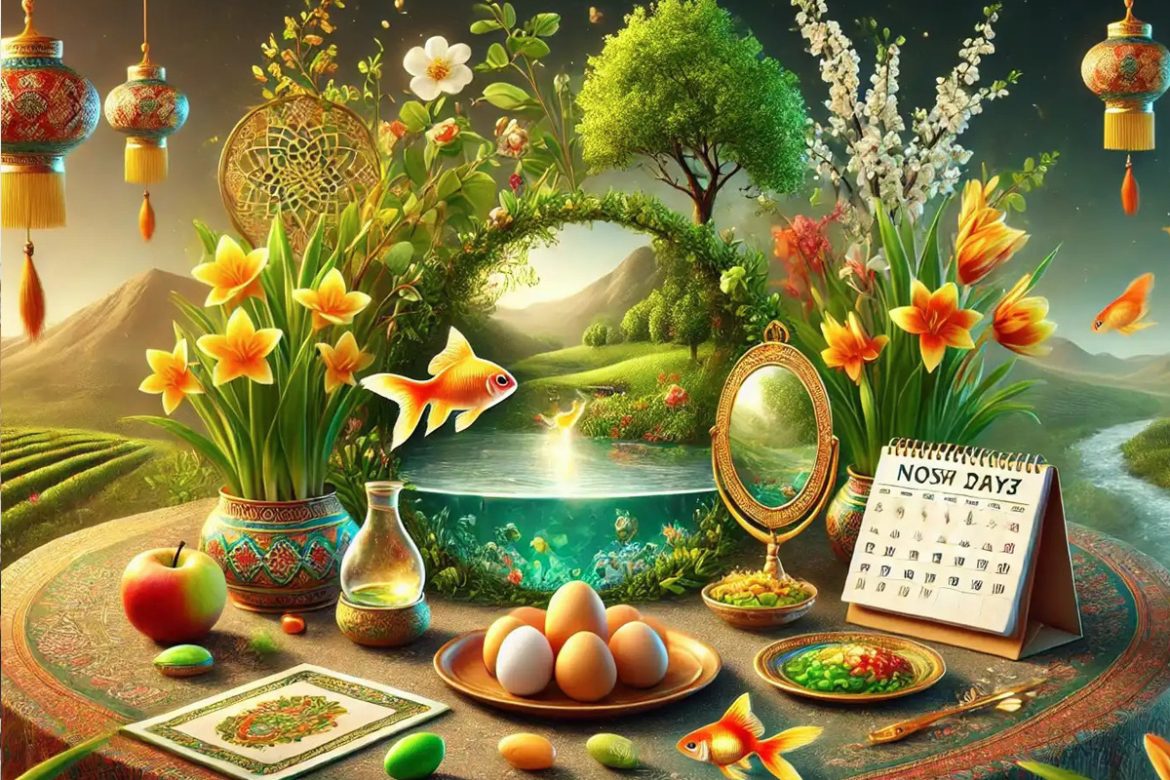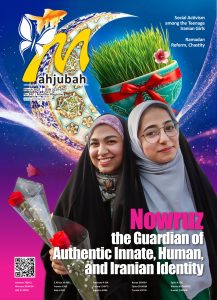Although political borders are respectable, the cultural connections among the countries where Nowruz is celebrated are too profound to be overlooked. Nowruz is a legacy rooted in shared rich cultural traditions established by our ancestors, and this precious legacy is an expression of the shared cultural life between the Nowruz-celebrating countries.
Anyone in cultural Iran who seeks the roots of their cultural and historical identity must pay visits to Marv, Abivard, Mehneh, and Sarakhs, and explore the history and civilization of their ancestors in Samarkand, Bukhara, and Khujand. Therefore, celebrations such as Nowruz should be seen as an opportunity to immerse oneself in a shared culture.
The mystical whispers of Kamal Khujandi continue to resonate in our ears, and the voice of Anvari Abivardi flows from the plains of Qaraqum; much like the roaring rivers of Seyhoun (Syr Darya) and Jeyhun (Amu Darya).
Keeping in view such strong bonds of friendship and unity among Nowruz-celebrating countries, it is possible to emphasize the necessity and importance of a common presence in global culture.
Being an ancient and precious heritage, Nowruz shines like a brilliant jewel in the history of human civilization—a festivity that, with the arrival of spring, heralds the rebirth of nature and the renewal of life. Rooted in Iranian culture and civilization, this timeless ritual stands out as a symbol of solidarity and friendship among many nations.
Nowruz is celebrated in many countries, including Iran, Afghanistan, Tajikistan, Azerbaijan, Uzbekistan, Turkmenistan, Kazakhstan, Kyrgyzstan, Mongolia, Turkey, Iraq, Pakistan, and even parts of India and China. Each of these nations welcomes this ancient celebration with its own unique ceremonies and customs. However, the core theme of Nowruz—renewal, friendship, and reconnection with nature and people—remains the same everywhere.
In Iran, setting the Haft-sin table with symbols such as Sib (apple), Sabzeh (sprout), Samanu (wheat pudding), Senjed (oleaster), Sir (garlic), Serkeh (vinegar), and Somagh (sumac) represents good wishes for the new year. In Afghanistan, people welcome Nowruz by cooking samanuk (samanu) and holding a rose festival in Mazar-e-Sharif. In Tajikistan, a flower-carving ceremony is held, in which young people celebrate the beginning of the new year by collecting spring flowers and presenting them to their elders. In Azerbaijan and Turkey, the festival of jumping over the fire on Chaharshanbe Suri (the last Wednesday of the year) and cooking local dishes are part of the Nowruz rituals. In Uzbekistan and Kazakhstan, street performances and folk festivals transform the face of cities during Nowruz.
Nowruz also has a special place in Persian literature and other regional languages. Great poets such as Hafez, Saadi, Rumi, Ferdowsi, and Rudaki have described spring and Nowruz in their works.
With all its symbols and rituals, Nowruz is more than a simple celebration; this ancient festivity serves as a bridge between the past, present, and future. By transcending geographical and cultural boundaries, it connects nations and conveys a universal message of peace, love, friendship, and solidarity.
In a world where differences and borders often lead to division, Nowruz demonstrates how a cultural celebration can transcend boundaries and bring nations closer together. This cultural closeness creates a platform for greater interaction among countries and contributes to fostering global peace.
In his messages on the occasion of Nowruz, UN Secretary-General António Guterres described this ancient festival as a symbol of new beginnings, the rebirth of nature, and an opportunity to promote peace and solidarity among nations. In his message, he stated: “Nowruz marks a new beginning; a new day, a new year, the arrival of spring, and the rebirth of nature.” He also emphasized that Nowruz brings together millions of people from different nations, promoting dialogue, good neighborliness, and reconciliation during these challenging times. Guterres expressed his hope that Nowruz will bring peace, tranquility, health, and happiness to all people in the world.
Therefore, Nowruz has not only been a symbol of unity and solidarity in the past but has also maintained its significance as a cultural asset in today’s world. This festivity bridges the past and the future, uniting people from East to West, from Central Asia to the Middle East, in a profound cultural convergence. Such a legacy, which has endured for centuries, will undoubtedly continue to serve as a messenger of peace, friendship, and unity in the future.
Nowruz also holds a special place among ECO member states. This organization, which includes Iran, Pakistan, Turkey, Afghanistan, Azerbaijan, Kazakhstan, Kyrgyzstan, Tajikistan, Turkmenistan, and Uzbekistan, recognizes Nowruz as shared cultural heritage. In these countries, Nowruz is celebrated with diverse ceremonies and customs that reflect the region’s cultural and historical richness.
In Pakistan, Nowruz is known as “Alam Afroz” and is particularly celebrated among the country’s Shia and Persian-speaking communities. People mark the day by wearing new clothes, visiting friends and family, and preparing traditional dishes. In Turkey, especially in the eastern and southeastern regions, Nowruz is celebrated as a symbol of spring and the rebirth of nature. People welcome the New Year by lighting bonfires and jumping over them as part of the festivities.
In Central Asian countries such as Kazakhstan, Kyrgyzstan, Turkmenistan, and Uzbekistan, Nowruz is celebrated with street gatherings, musical performances, and folk dances. People welcome spring by preparing traditional dishes such as ‘Nowruz Koje’ and ‘Somalaq’ and strengthening social bonds by visiting each other.
Highlighting the significance of Nowruz as a shared cultural heritage, ECO organizes numerous programs to commemorate this ancient tradition. For instance, in recent years, Nowruz celebrations have been held in Tehran with the participation of the ECO Secretary-General and ambassadors of member countries. These events underscore the importance of this festivity in strengthening cultural ties and fostering unity among the nations of the region.
Happy Nowruz
By: Dr. Salman Rostami, Cultural Expert of the I. R. Iran at the ECO Cultural Institute





